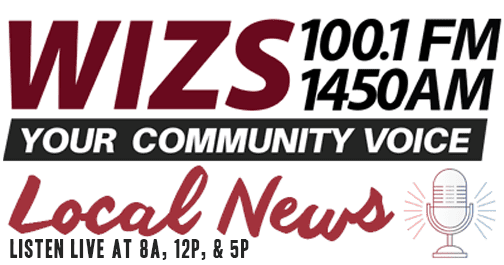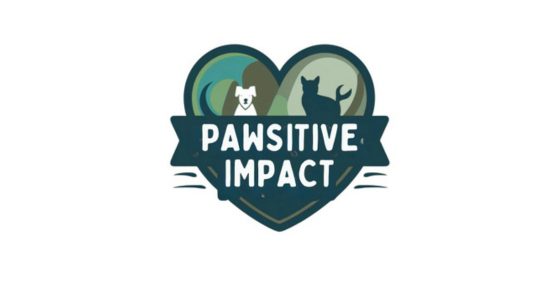From grilling to swimming, these tips will help keep you safe for the 4th of July weekend.
Please keep this information in mind.
Disclaimer – This is not advice.
Click play or read below.
– Press Release Courtesy of the State of North Carolina –
As the summer swimming season kicks into full gear, Insurance Commissioner and Safe Kids North Carolina Chair Mike Causey reminds parents and caregivers about important safety tips to reduce child drownings.
“On these warm summer days in North Carolina, many families will be drawn to activities near water,” said Commissioner Causey. “Drownings can happen so fast – before you even realize what’s happening. So, we want parents and caregivers to be particularly cautious and take steps to avoid any potential tragedies in the water.”
FOR A VIDEO MESSAGE FROM COMMISSIONER CAUSEY, CLICK HERE.
According to the Centers for Disease Control, drowning is the second leading cause of death in children ages 1-14. It is the leading cause of unintentional death in children under the age of 5.
Watch for rip currents
Rip currents are a strong channel of water extending from the shore out into the water. If you see a current of choppy, off-colored water extending from the shore, steer clear. If you do get pulled out, stay calm, let the current carry you for a while and keep breathing. Don’t try to swim against the current! Gain your composure and start swimming horizontal to the shore until you’re out of the current. Once out, swim diagonally towards the shore. If you can’t make it to the shore, wave your arms and make noise so someone can see or hear you and get help.
How do rip currents form?
When waves break more strongly than others onto the shore, they can cause a circulation in the water that produces a rip current. Rip currents tend to form near a shallow point in the water, such as a sandbar, or close to jetties and piers and can happen at any beach with breaking waves. Their force is strong enough to pull the strongest swimmer out to sea.
Heed the Warning Flags
- Red flags indicate strong surf and currents.
- Yellow flags indicate moderate surf and currents — the water is likely to be rough but not exceedingly dangerous. Exercise caution and stay near the lifeguards.
- Green flags indicate the ocean is calm or clear.
- Blue or purple flags often indicate that potentially dangerous marine life (think sharks or jellyfish) are in the area or have been spotted nearby.
Know how to swim
- Ocean swimming is different from swimming in a pool or lake — be prepared to deal with strong surf before running in.
- If you’re at the beach with a child or adult who can’t swim, make sure everyone has a well-fitting lifejacket.
- The ocean floor is not flat and beaches can change drastically from year to year. When heading into the water, be aware that the ocean floor can drop off unexpectedly, so be prepared to swim in water over your head.
- Obey the buddy system while swimming. Keep a friend nearby in case either of you ends up needing help.
- Pick a swimming spot close to a lifeguard. Lifeguards are there for a reason — they know and can see things about the beach that most beachgoers don’t.
Pool Safety
Safe Kids North Carolina reminds parents and caregivers to take the following precautions around pools and open water:
- Always watch children and never leave them unattended.
- Keep children away from pool drains, pipes and other openings.
- Always keep a charged phone nearby.
- Know how to perform CPR on children and adults.
- Understand the basics of lifesaving so you can assist in an emergency.
- Install a fence at least 4 feet high around the perimeter of the pool or spa.
- Use self-closing and self-latching gates.
- Ensure all pools and spas have compliant drain covers. Install an alarm on the door leading from the house to the pool.
Know the signs of drowning
Most people believe a drowning person involves flailing arms or frantic calls for help, but that scene is often incorrect. Drowning can happen quietly when a helpless person is unable to take in a breath or call for help. The CDC estimates 10% of parents watch their children drown because they don’t know what’s happening. Rescuers may have as few as 20 seconds to save a person from drowning.
For more detailed information about the water safety, go to https://www.ncosfm.gov/injury-prevention/safe-kids/water-safety
– Press Release Courtesy of the State of North Carolina –
Do your part to keep the Fourth of July safe by never driving if you are impaired.
That was the key message at Thursday’s kickoff of the annual North Carolina Governor’s Highway Safety Program’s Fourth of July Booze It & Lose it campaign, dubbed ‘Operation Firecracker.’ The event was held in Greenville.
Operation Firecracker aims to prevent alcohol-related crashes by targeting impaired drivers during the July 4th holiday season. This year’s campaign runs June 28-July 4 with law enforcement agencies running sobriety checkpoints in all 100 counties to help catch drunk drivers and reduce fatalities.
“With the summer, upcoming holidays and people emerging after quarantine — emergency departments across the state, and the first responders you see here today, will unfortunately see increases in people (especially teenagers and young people) injured or killed after making the unforgivable decision to drink and drive – a tragedy that is completely avoidable,” said Dr. Jason Hack, emergency medicine physician for East Carolina University and Vidant Medical Center in Greenville.
Thursday’s event celebrated the hard work and sacrifices made by health care workers, emergency medical services, law enforcement, military personnel, and other first responders during the pandemic. Speakers urged North Carolina drivers to help emergency responders by not drinking and driving.
“They have been keeping us and our families, friends and neighbors safe during the COVID-19 pandemic in North Carolina,” said Mark Ezzell, director of the N.C. Governor’s Highway Safety Program. “And they will be working again to keep us safe this Fourth of July, when many of us are vacationing and enjoying time with friends and family.
“We are grateful for their hard work. But I hope they will not have to handle any impaired driving cases this July 4th holiday.”
So far in 2021, 145 people have died in alcohol and drug-related crashes in North Carolina. While that is a decrease from this time last year, it’s not enough.
“Law enforcement will be proactively assuring our roads are safe from those that persist in drinking and driving,” said Pitt County Sheriff Paula S. Dance. “We want everyone to survive by calling a taxi, Uber, Lift or a friend.
“This one decision – drive or don’t drive – will affect everyone on the road. Make it a good decision. Save a life. It could be your own.”
The ‘Booze It & Lose It’ campaign is one of the many traffic safety campaigns led by NCGHSP, which also funds Click It or Ticket, BikeSafe NC, Watch For Me NC, and North Carolina’s Vision Zero initiative.
Please support this cause by taking pictures and use the hashtags #BoozeIt&LoseIt #DriveSoberGetPulledOver and #NCGHSP this Fourth of July holiday.
Many folks associate summer with cookouts – and cookouts usually involve grills. Whether it’s fueled by gas or charcoal, there are a few safety precautions to remember as grillmasters work their magic to create that perfect meal.
Local SERVPRO disaster remediation specialist William Paul shared some pre-grilling safety tips from the National Fire Protection Association and the Hearth, Patio & Barbecue Association:
- READY: Clean grill racks and grease trays. For gas grills, check the gas tank hose for leaks at the beginning of the season.
- SET: Choose a safe, firm, level spot for the grill away from coolers, people and pets. Grill outside, never in a garage or under the awning on a deck, the eaves of your home, or low-hanging branches.
- GO: Prepare the grill for cooking carefully. For charcoal grills, use a charcoal chimney with newspaper, a charcoal starter fluid, or an electric charcoal starter plugged into an outdoor-rated extension cord. For gas grills, open the lid before turning the grill on. If you smell gas after the grill is lit, do not try to move the grill. Get away from the grill and call the fire department.
While grilling:
- SAFE ZONE: Keep children and pets at least three feet away from the hot grill, both while you are cooking and after you serve the food. Grill surfaces can remain hot for an hour or more.
- SAFE TOOLS: Use long-handled grill utensils in good condition; avoid loose, flowing clothing; and wear flame-retardant mitts to adjust vents to help prevent burns.
- SAFE COOKING: Keep the fire under control. Manage flareups by adjusting grill height, using grill controls, or spreading out the coal bed. Keep baking soda within reach to control grease fires. Watch for blowing embers and have a fire extinguisher, a garden hose or a bucket of sand handy to extinguish spark-triggered fires. Never attempt to move a hot grill.
“Charcoal and gas grills, barbeques and the like are involved in an average of more than 5,000 structure fires each year and almost 5,000 additional outdoor fires,” Paul stated. Grilling accidents result in 19,700 trips to the hospital annually, almost half of which are burns. Children under the age of 5 account or 39 percent of those burns, he said, citing National Fire Protection Association statistics.

















